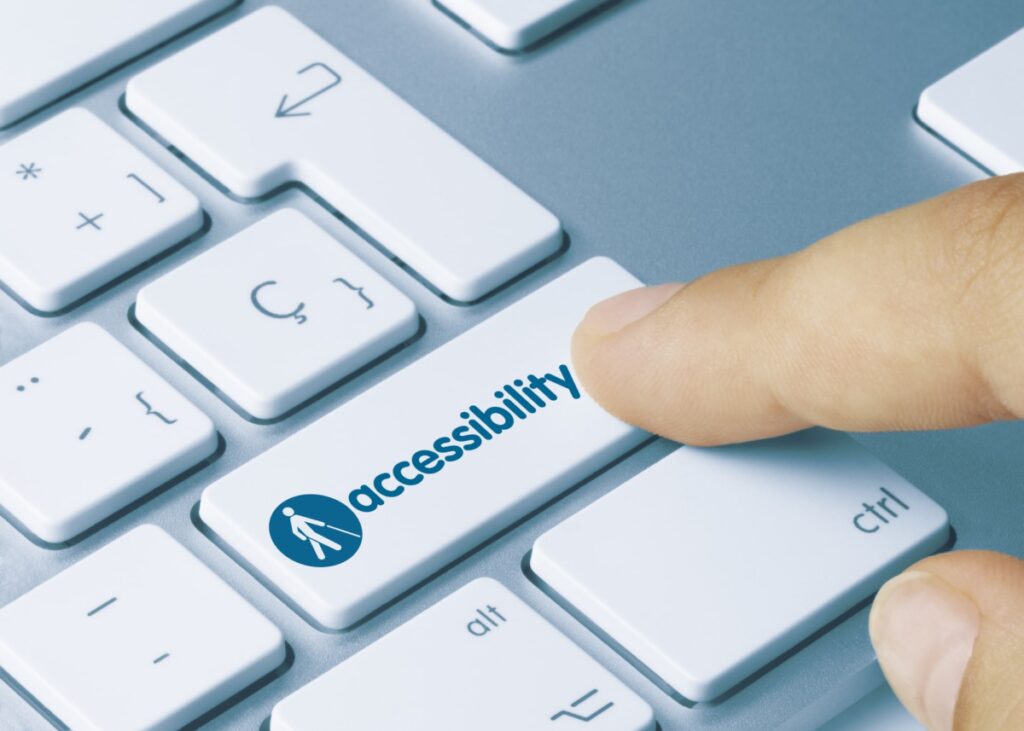
Imagine doing all you can to build a beautiful website that is interactive, informative, and dynamic – only to find yourself the target of a lawsuit. The lawsuit is not about misinformation or anything like that – but about the accessibility of your website to those who are disabled. Whether it be those who have vision difficulties, hearing impairment, mobility challenges, or anything that makes surfing the web a little more difficult – it is the responsibility of the company to ensure their website is accessible.
TheWeb Content Accessibility Guidelines (WCAG)are an important asset for businesses, organizations, and other entities who want to make their digital content accessible to all people. Just like the name states, WCAG is a detailed set of technical guidelines explaining how you can make your website, app, or other digital properties accessible to people with various kinds of disabilities. Additionally, Title III of the ADA prohibits discrimination against persons with disabilities in any place of “public accommodation.” Although Title III may have been traditionally construed to apply to physical brick-and-mortar locations, some courts have ruled that internet websites are included in that list and therefore must be accessible to persons with disabilities.
While many companies are choosing to use popular plug-ins to ensure their website is accessible – these programs are fairly new and may cause issues with the design of your website if not implemented properly. However, there are ways that you can ensure your website meets accessibility requirements without having to rely on an unproven plug-in.
Here are five ways Webster Digital Marketing can assist in making your website is more accessible:
1. Use a Clear and Consistent Layout:
Ensure your website has a clean and well-organized layout. Use headings, subheadings, and proper formatting to make the content easy to navigate and understand. Maintain a consistent structure throughout the website, so users can anticipate where to find specific information.
2. Provide Alternative Text for Images:
We include descriptive alternative text (alt text) for all images on your website. Alt text provides a textual description of the image, allowing visually impaired users to understand the content. Use alt text that accurately describes the purpose or content of the image, while keeping it concise and relevant.
3. Use Descriptive Link Text:
It is good to avoid using generic link text like “click here” or “read more.” Instead, we use descriptive text that provides clear information about the destination of the link. For example, use “Learn more about our accessibility policy” instead of “Click here for more information.”
4. Ensure Keyboard Accessibility:
Make sure all functionality on your website can be accessed and operated using a keyboard alone. This is important for users who rely on keyboard navigation or assistive technologies. We can test your website by navigating through it using the Tab key, ensuring all interactive elements, such as links, buttons, and form fields, can be accessed and activated without a mouse.
5. Provide Captions and Transcripts for Multimedia:
Include captions or transcripts for any multimedia content, such as videos or audio files, on your website. This helps deaf or hard-of-hearing users access the information. Captions should accurately represent the spoken words and any relevant sounds, while transcripts provide a text-based version of the content.
Remember, these are just a few steps to get started with web accessibility that do not require you to purchase any additional programs. What is most important is being aware and having this top of mind with any website design idea. It’s essential to follow established guidelines such as the Web Content Accessibility Guidelines (WCAG) to ensure your website meets the necessary standards.
Let us help you make your website accessible!
Webster Digital Marketing designs professional, mobile-friendly, and accessible websites* that won’t break the bank. We create websites with the best practices for the user experience in mind.
Check out our portfolioorcontact Webster todayfor a quote.
*Please consult the advice of a legal professional to ensure that your site meets the accessibility requirements.
